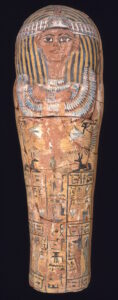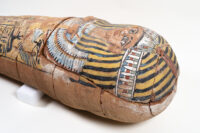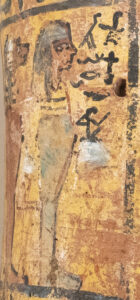A rare 18th century musical automaton clock stolen from Preston Manor in Brighton in 2001 has been recovered by Sussex Police and returned to the museum. It was rediscovered when it was offered for sale at auction last year. The auction house subscribes to the Art Loss Register (ALR) due diligence service which checks items against the lost art database before a sale, and its experts recognized it as the stolen clock.
Lucy O’Meara from the Art Loss Register said: “The ALR’s research team identified the item as a match, despite extensive restoration and alteration to the clock.
“It had different urn finials and different feet making it appear at first glance to be a different clock. This was one of over 400,000 items our expert team checks against our database every year.
“Our recovery team used their detective skills to compare the wood grain which matched up exactly. After we identified the match, our team liaised with the auction house and notified Brighton & Hove Museums of the location of the stolen clock. Sussex Police’s Rural Crime Team then recovered the item from the auction house and returned it to the Museum.”
The clock was stolen on February 12, 2001, in broad daylight when Preston Manor was open to visitors. Staff pressed the alarm buttons and called the police but the thieves fled in a getaway car they had parked near the entrance. The Sussex Police investigated the theft, but no suspects were ever found. Two years later, the clock was sold at auction. At that time, the auction house had no information about its ownership history and it was not subscribed to the ALR, so the sale went through with nobody the wiser. The collector who bought it 20 years ago relisted it with the same auction house, only this time the ALR’s crack team stepped up to the plate. The trail from the sale 20 years ago was too cold for the police to track down anyone involved in the theft.
 The clock was made by Thomas Hunter Jr. of London, one of the top clockmakers in the country, in around 1760-70. It is a bracket table clock with painted maritime decoration above the clock face. It is both an automaton and a musical clock: ships above the clock face sail to the music every hour on the hour. The clock was acquired by the Stanford family of Preston Manor and was in the estate by at least 1905. It was placed in the south-facing Morning Room with a view of the sea, linking the maritime motif of the timepiece with Brighton’s own history as a seaside town.
The clock was made by Thomas Hunter Jr. of London, one of the top clockmakers in the country, in around 1760-70. It is a bracket table clock with painted maritime decoration above the clock face. It is both an automaton and a musical clock: ships above the clock face sail to the music every hour on the hour. The clock was acquired by the Stanford family of Preston Manor and was in the estate by at least 1905. It was placed in the south-facing Morning Room with a view of the sea, linking the maritime motif of the timepiece with Brighton’s own history as a seaside town.
When Preston Manor and its contents were given to the city in 1932, the clock was part of the gift. It quickly became one of the more popular features of the estate. Visitors assembled in the room to hear the music play and the ships sail among the painted waves. Brighton & Hove Museums plans to restore the clock back to working order so it can return to delighting visitors at Preston Manor.







